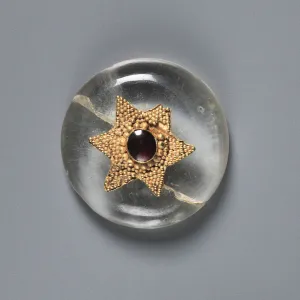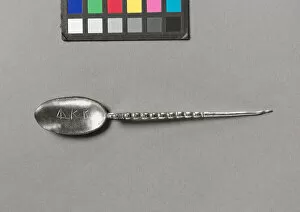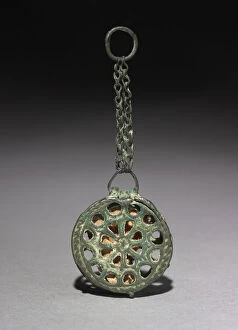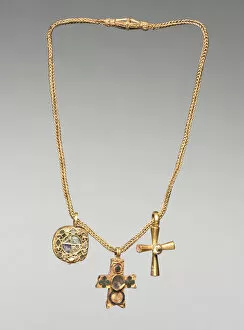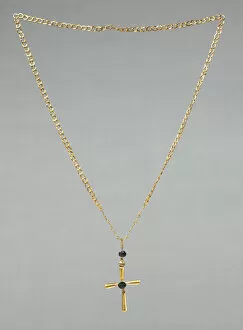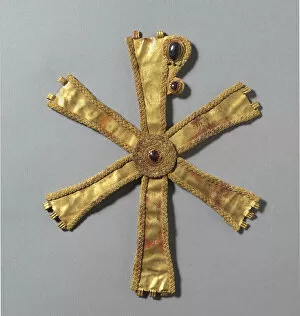Early Byzantine Period Collection
The Early Byzantine Period, spanning from the 4th to the 7th century, was a time of artistic and cultural flourishing in the Eastern Roman Empire
All Professionally Made to Order for Quick Shipping
The Early Byzantine Period, spanning from the 4th to the 7th century, was a time of artistic and cultural flourishing in the Eastern Roman Empire. This captivating era is beautifully represented by a variety of exquisite artifacts. One such artifact is a stunning silver bowl dating back to c. 350-600. Its intricate design showcases the skilled craftsmanship prevalent during this period. Another remarkable piece is a buckle adorned with an embossed head in profile, crafted from gold, lapis lazuli, and glass between 400-600. A chain with two pendants and a cross made of gold with granulation and garnet from the 500s exemplifies the religious significance attached to jewelry during this time. Similarly, a button made of rock crystal featuring a garnet mounted in a gold granulated star reflects both elegance and symbolism. In terms of dining utensils, we find an extraordinary fork with an animal hoof finial (ornament) made of silver dating back to the 300s. Alongside it lies an equally impressive silver spoon from the same era. Religious relics were also highly valued during this period as demonstrated by a phylactery reliquary pendant made of copper alloy around c. 500-700. Its intricate design suggests its importance as both an object for veneration and protection. Jewelry played an essential role in Byzantine society; one can marvel at an earring (one of pair) crafted from gold, pearls, glass, and emeralds dating back to the 600s - truly representing opulence at its finest. Cosmetics were not overlooked either; behold a cosmetic jar created using gold filigree embellished with sapphire and rock crystal originating from the 500s - showcasing beauty beyond measure. Chains adorned with pendants became popular fashion statements during this era; one example features enamel work alongside glass on early 500s gold chain holding two crosses - a testament to the fusion of artistry and faith.




